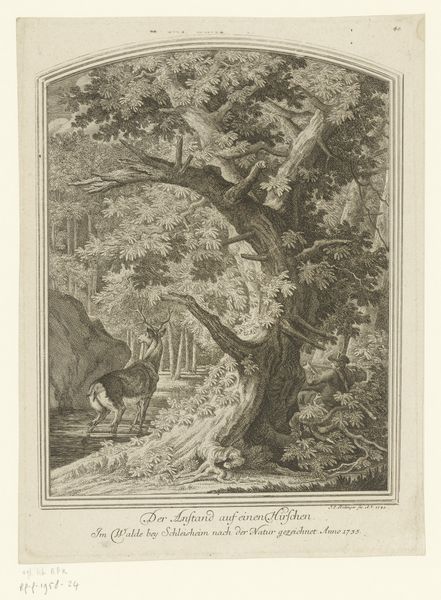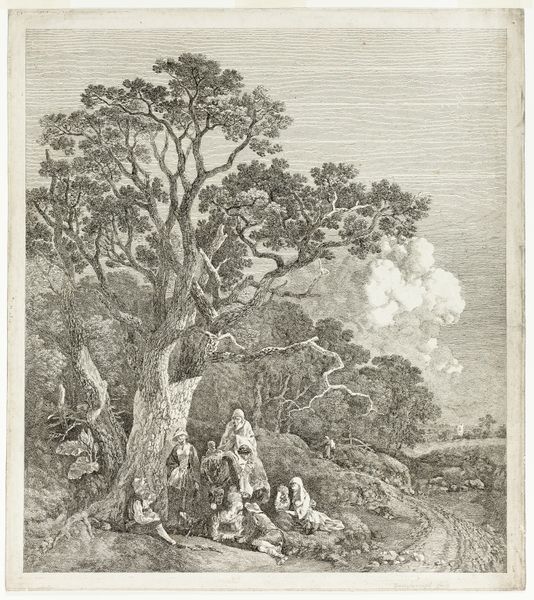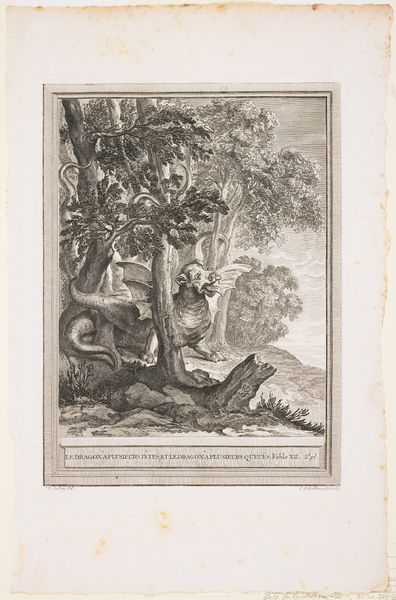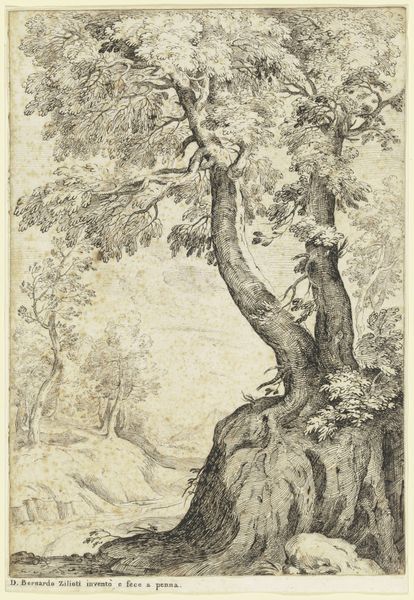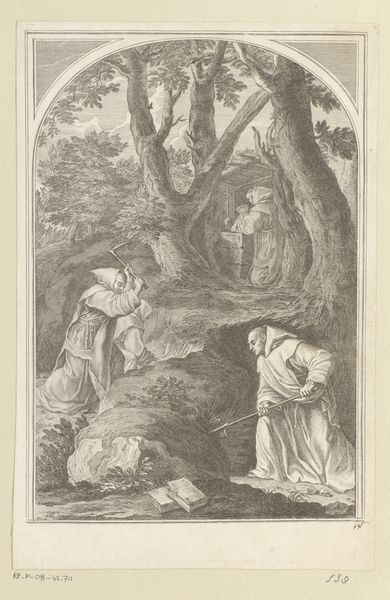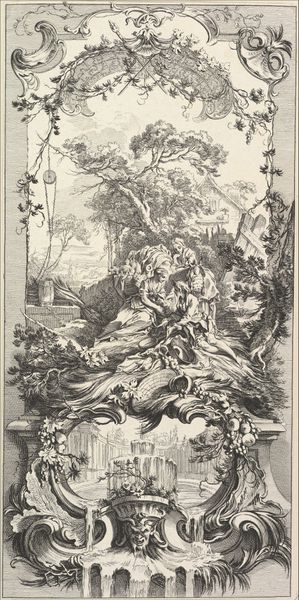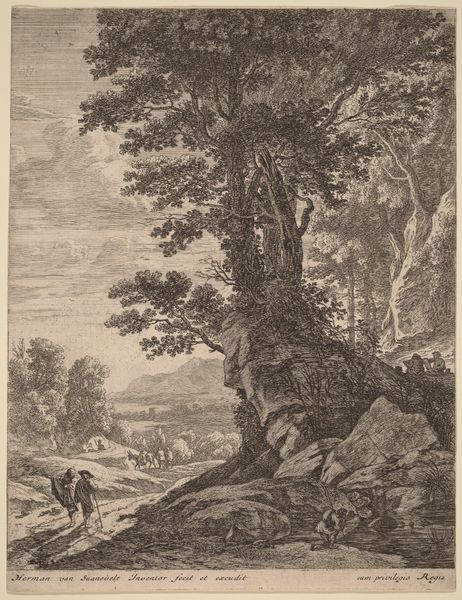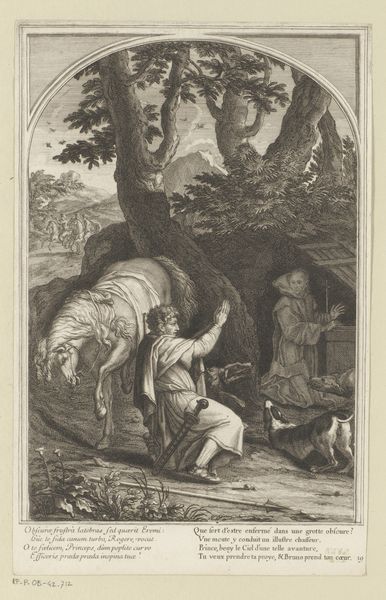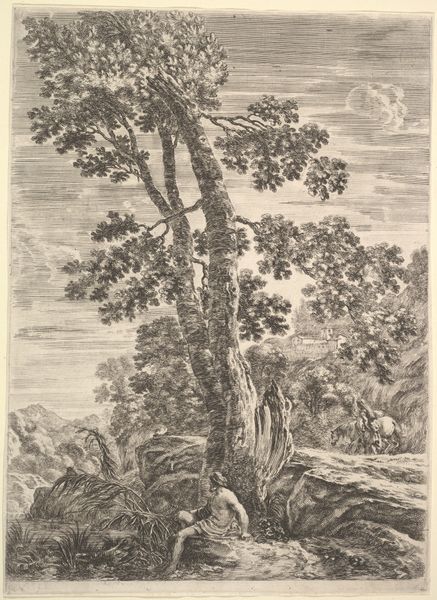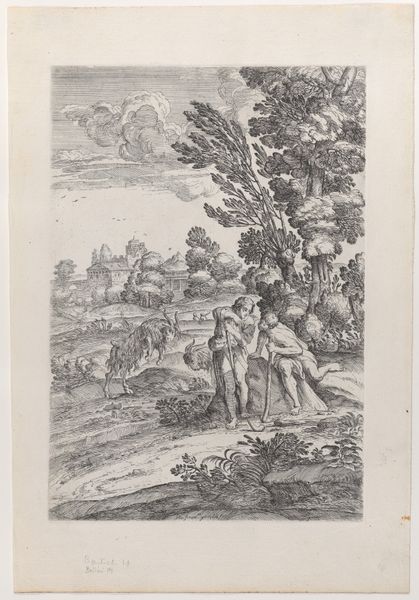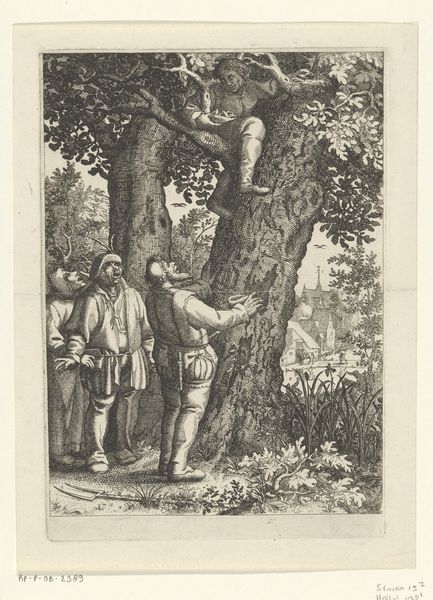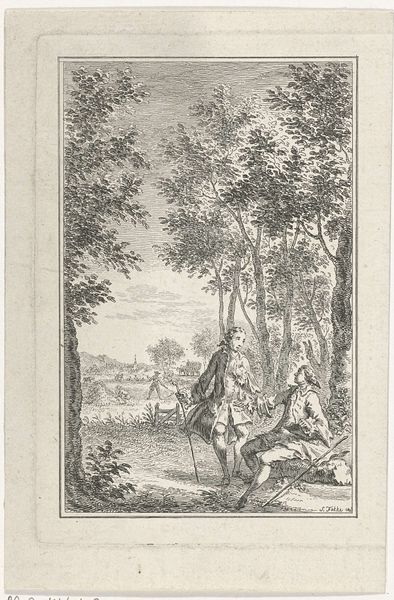
print, engraving
#
baroque
# print
#
landscape
#
engraving
Dimensions: 200 mm (height) x 133 mm (width) (brutto)
Curator: This is "The Owl and the Nightingale" by Alexia von Lode, created around 1760. It's an engraving, a printmaking technique. Editor: It's striking. My eye immediately goes to the gnarled tree in the center, the birds perched within its branches creating such an uneasy feel... It feels almost adversarial. Curator: The process of engraving allows for incredibly fine detail. Look at how von Lode renders the texture of the bark, the individual leaves. It would have been a very labor-intensive process. The level of craftsmanship speaks to the value placed on skilled manual labor. And what did prints signify at that time? Mass production that catered for a wider distribution and different social strata... Editor: Exactly! That central image, the owl facing off the nightingale, it’s ripe with symbolic meaning. The owl, traditionally associated with darkness, wisdom, and solitude... And the nightingale, a symbol of beauty, song, and joy. They represent opposing forces, a visual embodiment of a debate, perhaps about nature versus civilization or even reason versus emotion. Curator: The landscape is rendered in such a way that nature is active but seems so far off to grasp... There is a human intervention, the house to the side. It is all neatly planned, which can hint to many production related constraints. Do you think this reflects contemporary notions of landscape and man's control of the materials present in nature? Editor: Yes, definitely. Also, don’t you feel the contrast in the image mirrors intellectual and artistic tensions from that era? Baroque sensibilities lingering perhaps, but with a definite movement toward a more rational, "enlightened" view, battling between the natural world being appreciated and human interference and constraint, just like you say. Curator: Considering this print as part of von Lode's larger artistic production is key to its reading, what kind of artistic workshops did she have contact with, for instance. By extension, how were distribution chains developing for printed matter in the 18th century? Editor: Food for thought indeed. Seeing how she weaves those timeless symbols into such detailed image definitely allows for continuous layers of appreciation. Thank you!
Comments
No comments
Be the first to comment and join the conversation on the ultimate creative platform.

